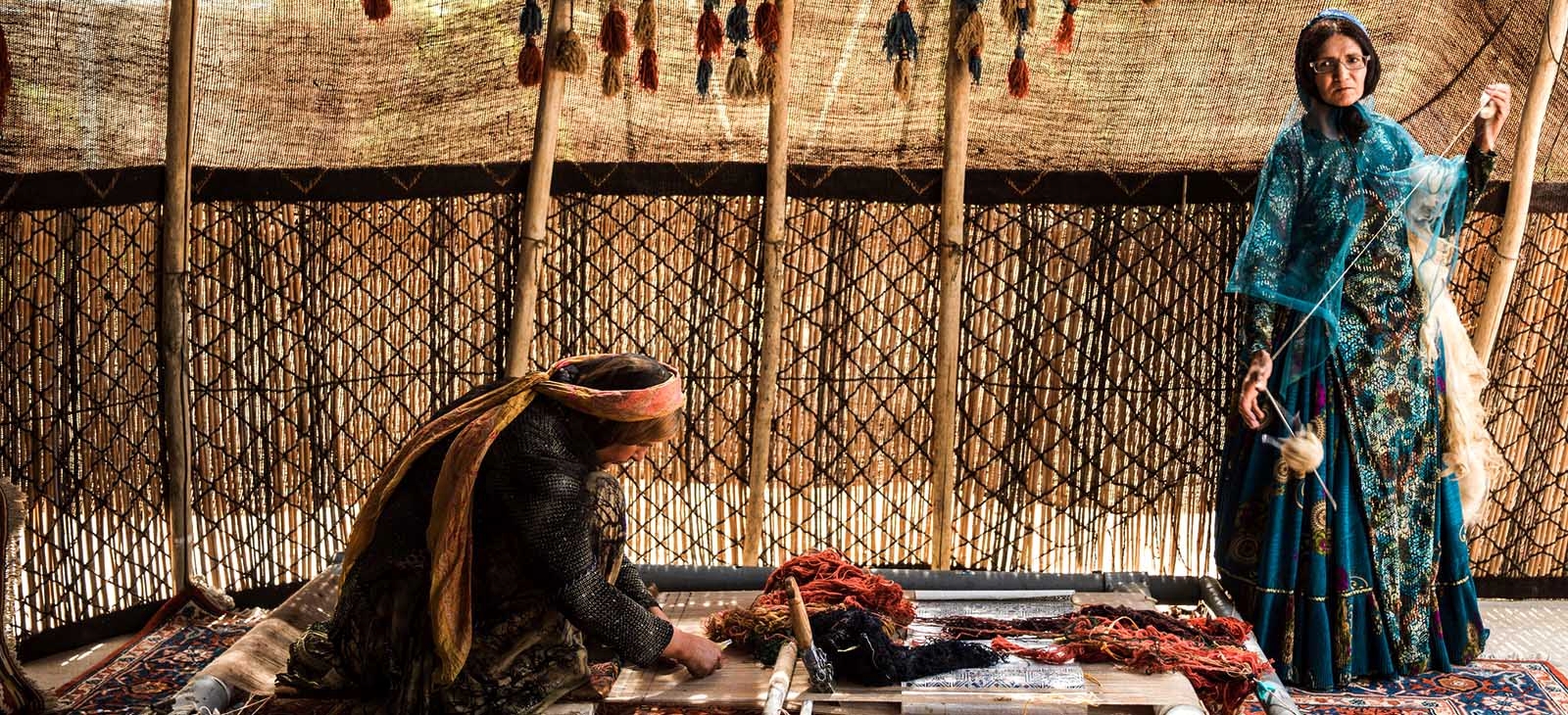There has never been a census of pastoral nomads in Iran. In 1986 census officials estimated that nomads totaled 1.8 million. The number of tribally organized people, both nomadic and sedentary, may be twice that figure, or nearly 4 million. The nomadic population practices transhumance, migrating in the spring and in the fall.
It is only in Iran where you can meet varied ethnic groups of nomads with their specific lifestyles, dialects and costumes in one political entity.
There has never been a census of pastoral nomads in Iran. In 1986 census officials estimated that nomads totaled 1.8 million. The number of tribally organized people, both nomadic and sedentary, may be twice that figure, or nearly 4 million. The nomadic population practices transhumance, migrating in the spring and in the fall. The migrating nomads constitute a community with a way of living distinct from the urban and rural communities. Two major, related factors prompt them to migrate to winter and summer territories, depending on seasonal changes. The first is their livelihood, and the second is the geographical and climatic conditions they live in. Each tribe claims the use of fixed territories for its summer and winter pastures and the right to use a specified migration route between these areas. Frequently summer and winter camps are widely separated, in some cases by as much as 300 kilometers. Consequently, the semiannual migrations, with families, flocks, and household equipment, may take up to two months to complete. The nomadic tribes are concentrated in the Zagros, but small groups are also found in northeastern and southeastern Iran. The movements of the tribes appear to be an adaptation to the ecology of the Zagros. In the summer, when the low valleys are parched from insufficient rainfall, the tribes are in the higher elevations. When the snows begin to fall and cover the pastures of the higher valleys, the tribes migrate to low-lying pastures that remain green throughout the winter because of the seasonal rainfall. Traditionally, the nomadic tribes have kept large herds of sheep and goats, which have provided the main source of red meat for Iran. During migrations the tribes trade their live animals, wool, hair, hides, dairy products, and various knotted and woven textiles with villagers and townspeople in return for manufactured and agricultural goods that the nomads are unable to produce. Two of the largest nomadic confederations in Iran are Qashqai and Bakhtiyari tribes.
- The most reputed tribe is Qashqai people are a conglomeration of clans of different ethnic origins, mostly Turkic, but also Arab, Kurdish, and Luri. They mainly live in the Iranian provinces of Fars, Khuzestan, Kohgiluyeh and Boyer-Ahmad Province, Chaharmahal and Bakhtiari Province, Bushehr and southern Isfahan, especially around the city of Shiraz and Firuzabad in Fars. Majority of Qashqai people were originally nomadicpastoralists and some remain so today. The traditional nomadic Qashqai travelled with their flocks each year from the summer highland pastures north of Shiraz roughly 480 km or 300 miles south to the winter pastures on lower (and warmer) lands near the Persian Gulf, to the southwest of Shiraz. The majority, however, have now become partially or wholly sedentary. The Qashqai are renowned for their pile carpets and other woven wool products.
- The Baḵtīārī or Great Lor tribes are one of Iran’s most important seasonally migrant communities. Their territory lies in the central Zagros north and west of the Kūhgīlūya territory. There’s a symbolic story behind the way of their clothing; Cheqa which is a white, with lines of black, sleeveless and open the front Bakhtiari men are wearing. The back lines on Cheqa is said that are the imitation to the Cyrus mausoleum, so that the white symbol Spanta Minoo (Nick Angel) come from the bottom up and black lines the symbol َAngereh Minoo (the devil) will come from the top down and it’s the symbol of ultimate triumph of good over evil. The tribe is divided into two separate branches: Haft Gang and Chahar Gang. The former consists of 55 and the latter of 24 clans. The Arabian and Lur clans mix together in the Bakhtiari tribe. The Bakhtiari tribe is also called the Great Lur. Supplementary items are obtained by hunting (gazelles in the qeshlaq, ibexes in the yeylaq, partridges, pheasants, etc.) and by gathering wild plants and vegetable substances such as berries and mushrooms for food and others for use as dyestuffs and craft materials.

